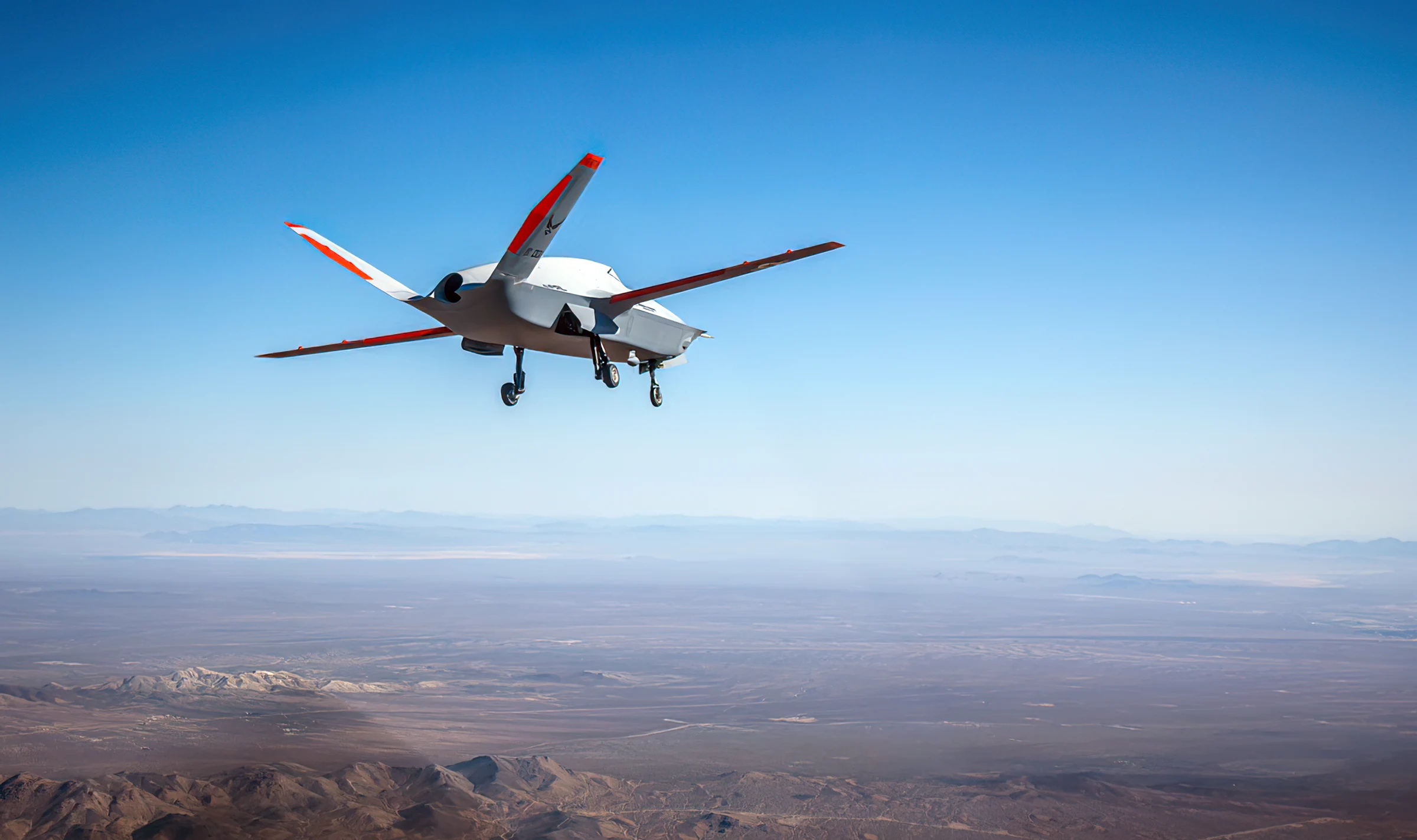On February 28, 2024, The XQ-67A Off-Board Sensing Station (OBSS)Benefit of cooperation between Air Force Research Laboratory (AFRL) Y General Atomics Aeronautical Systems, Inc. (GA-ASI)It produced its first aircraft, marking a milestone in military aviation with its modular design approach.
The XQ-67A OBSS: The Beginning of a New Era in Combat Aviation
The plane XQ-67A OBSS Created the first practical application of the concept of “genus/species” in military aviation. AFRL Y GA-ASI. This approach, which focuses on building aircraft variants from a common core chassis, promises to revolutionize military aircraft production by standardizing components and facilitating technical upgrades. The initiative is designed within the program Low-Cost Attritable Aircraft Platform Sharing (LCAAPS)It seeks to optimize resources and reduce costs while maintaining the ability to adapt to changing security needs.
According to Michael Atwood, vice president of advanced programs GA-ASIHe OPS A pioneer in using a common chassis for different types of aerial vehicles, it is a pioneer in homogenizing fleets. This approach accelerates the development of new aircraft and significantly reduces production and operating costs. The versatility of the design allows rapid incorporation of technological advances, ensuring that the armed forces have state-of-the-art equipment without making large investments.
Air Demonstration XQ-67A In the words of program director Trenton White, it represents an important step toward achieving “affordable combat mass.” OPS and aerospace engineer in the Aerospace Systems Directorate AFRL. This achievement underscores both companies' commitment to innovation in the defense industry, delivering efficient and economically viable solutions for the future of military aviation.
Air Force Research Laboratory (AFRL)
He AFRL Plays a key role in research and development of security technologies United States Air Force Materiel Command. With a team of more than 12,500 experts distributed across various technical areas, the laboratory leads projects in fields such as direct energy and integration of space combat systems. Its mission ranges from basic research to advanced technology development, providing critical capabilities to the nation's air, space and cyberspace forces.
strategy AFRL It includes collaboration with industry and academia to accelerate the innovation process and ensure the US military maintains a decisive technological advantage on the global stage. This interdisciplinary collaboration is essential to the development of advanced and affordable defense systems capable of responding to the demanding needs of the modern operational arena.
The success of the first flight of XQ-67A OBSS Reflecting the effectiveness of this collaborative strategy, it demonstrates the potential of synergies between the public and private sectors to advance military technology. This achievement represents a milestone in the development of modular aircraft and demonstrates its commitment. AFRL With innovation and excellence in the field of security.
General Atomics Aeronautical Systems, Inc. (GA-ASI)


GA-ASIDeputy General Atoms, has established itself as a leader in the design and manufacture of Remotely Piloted Aircraft (RPA) systems, radars and electro-optical and mission systems. His life is marked by the development of the series Predator® RPA and multimode radar Lynx®Highlighting its ability to provide high-tech solutions in surveillance and intelligence.
With more than eight million flight hours, GA-ASI Demonstrates an unwavering commitment to the quality and reliability of its systems. The company is involved in aircraft manufacturing and develops advanced software for sensor control and image analysis, provides training and support services and is a leader in metamaterial antenna research. These skills underline the importance GA-ASI As a fundamental pillar in the field of aviation security.
Basis of operations General Atoms San Diego, California is the center of a continuous effort to advance the frontiers of technology in energy and security. The Institute plays a major role in nuclear fission and fusion energy research, making significant contributions to technological development in fields critical to national security and scientific advancement.


